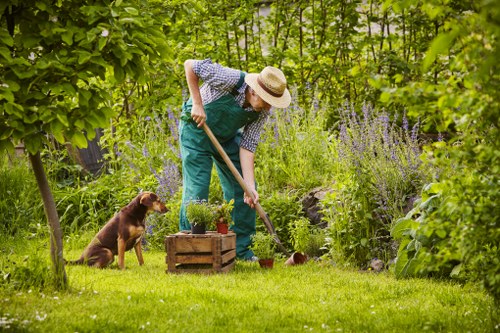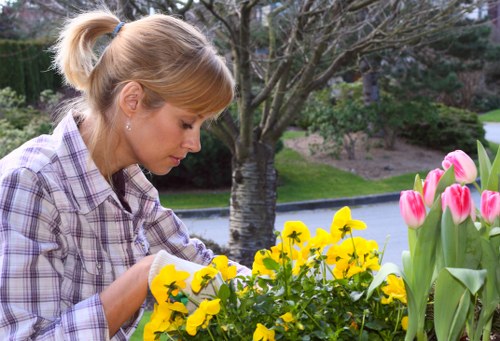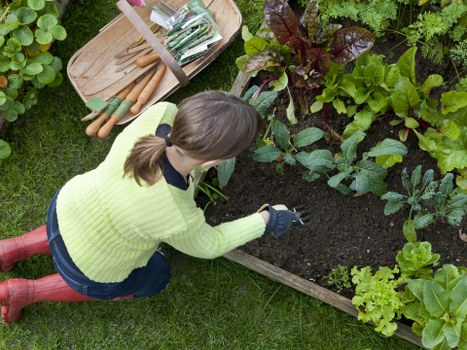Tree Lopping and Removal in Garden Maintenance

Tree lopping and removal have become indispensable tasks in maintaining a vibrant and safe garden environment. Garden maintenance that includes the strategic cutting and pruning of trees not only improves aesthetics but also ensures healthy growth. In today’s world where both nature and man-made structures coexist, careful consideration must be devoted to managing trees that may pose risks or obstruct other garden elements. This article delves into the many aspects of tree lopping and removal, emphasizing techniques, safety considerations, environmental benefits, and cost implications. With a balanced mix of professional advice and practical insights, readers from various backgrounds will find the information useful and engaging.
Maintaining a garden is much like tending to a living artwork. Every plant plays a role and every decision, such as removing an overgrown or hazardous tree, directly impacts the overall ambiance. The importance of timely tree removal can rarely be overstated, as it plays a crucial role in sustaining the health of surrounding vegetation. Often, trees are lopped not only for safety reasons but as a part of a broader landscape overhaul. This intervention preserves the beauty of outdoor spaces and prevents costly damage to properties caused by overextended roots or falling branches.
Homeowners and professional landscapers alike benefit from understanding the nuances of tree lopping. It is a process that demands precision and a careful assessment of the ecosystem. When trees are removed or strategically pruned, the resulting space often encourages new growth and increased sunlight penetration, leading to a more dynamic garden. Expertise in tree removal ensures that the remaining flora continues to receive adequate care, while also enhancing the overall safety and functionality of the garden area.

Understanding the Necessity of Tree Lopping
The necessity of tree lopping often stems from a range of practical and aesthetic considerations. Many gardens boast a variety of mature trees that, although majestic, may become problematic over time. Whether due to disease, improper growth patterns, or interference with utilities, tree removal is an essential tool in the garden maintenance arsenal. Regular maintenance, including the removal of dead or overgrown branches, ensures the overall health of the garden. Garden upkeep is not merely a matter of appearance, but also one of safety and longevity.
Incorporating tree lopping in routine garden maintenance has numerous benefits. When executed correctly, it enhances air circulation, reduces risks associated with falling branches, and paves the way for new, healthy growth. By removing obstructive limbs, sunlight can reach the lower parts of the garden, stimulating undergrowth and flowering plants. Seasonal pruning is a recommended practice among many garden experts, as it contributes to the balanced development of the entire ecosystem. Emphasizing strategic removal rather than random cutting yields the best results.
Moreover, the practice of tree lopping is intertwined with broader ecological benefits. By reducing overcrowding, trees and plants are given ample space to thrive. This careful management decreases the likelihood of pest infestations and disease, making natural pest control more effective. The removal of compromised or hazardous sections creates a safer environment for both residents and wildlife, ensuring that the outdoor living area remains inviting throughout the year.

Advanced Techniques and Safety Measures
Modern tree lopping methods have evolved considerably, placing a premium on safety and efficiency. Today’s techniques prioritize reducing environmental impact while safeguarding gardeners and property. One of the fundamental strategies involves thorough site assessments before any cutting begins. In this preparatory phase, professionals analyze the tree’s condition, assess risks, and plan the removal process meticulously. The integration of technology, such as aerial inspections and advanced cutting tools, has revolutionized how tree removal is approached.
Modern Methods in Tree Removal
When exploring the varied techniques of tree removal, it’s imperative to emphasize a step-by-step approach. First, experts often employ precision cutting tools that allow for selective pruning, ensuring minimal damage to the tree’s overall structure if partial removal is required. Following this, safety protocols such as wearing protective gear, securing the area and using ropes or cranes for controlled dismantling are strictly observed. These methods not only enhance the safety of professionals but also minimize the disruption to the surrounding landscape.Every tree removal project should incorporate well-established safety measures. For example, reliable scaffolding and the use of specialized ropes enhance both precision and security. Professionals are trained in emergency response techniques, ensuring quick action in the unlikely event of an accident. This procedural rigor underlines the importance of planning and using the right equipment. Additionally, pre-removal inspections and thorough risk assessments are standard practices before commencing any tree lopping operation. The meticulous application of these techniques ensures that tree removal is not only effective but also safe for all parties involved.

Environmental Considerations and Benefits
Balancing garden aesthetics with environmental integrity is one of the central principles of tree lopping and removal. The practice of judiciously pruning or removing trees needs to be eco-friendly and considerate of local biodiversity. Responsible garden maintenance involves preserving soil integrity and ensuring that the natural ecosystem remains largely undisturbed. As trees are pruned, care is taken to avoid over-clearing areas that serve as habitats for local fauna. Professionals use sustainable methods to dispose of or recycle green waste, thereby contributing positively to the environmental cycle.
Maintaining biodiversity in a garden means recognizing that each tree and plant has its role. By selectively removing damaged or overgrown branches, gardeners can fortify the environment against diseases and pest outbreaks. This strategic removal technique acts as a natural ventilation system, boosting the resilience of surrounding flora and fauna. Moreover, an environmentally-informed approach to tree lopping minimizes the risk of erosion, protecting valuable topsoil that is essential for plant growth. The delicate balance between removal and conservation is maintained through continuous monitoring and adaptive maintenance practices.
From an ecological standpoint, sustainable tree lopping practices foster a healthier garden ecosystem. Businesses and homeowners are increasingly opting for services that emphasize green practices and the responsible management of natural resources. The use of biodegradable materials in the cleanup process and the careful selection of removal methods underscore a commitment to environmental ethics. Furthermore, the recycling and reusing of organic matter from removed trees contribute to enhanced soil fertility, reinforcing the positive cycle of growth and renewal in garden landscapes.

Cost, Professional Services, and Best Practices
In the realm of garden care, understanding the cost implications of tree lopping and removal is essential for both budgeting and planning. Professional services vary in pricing, depending on the complexity, location, and urgency of the job. Many companies provide detailed estimates and transparent pricing models to ensure that homeowners remain well-informed. The investment in professional tree removal goes beyond mere labor; it reflects a commitment to safety, environmental stewardship, and long-term garden vibrancy. For those looking to enhance their green spaces, opting for certified professionals often translates into extended benefits over time.
Several factors contribute to the cost of tree removal services. These include the size and location of the tree, the complexity of the removal process, and the necessary permits or insurance requirements. Homeowners are advised to solicit multiple quotes and check credentials to ensure they are working with reputable providers. Reputable service providers adhere to strict safety protocols and industry standards. This ensures that every operation not only meets legal requirements but also upholds environmental and community welfare. By understanding these factors, consumers can make informed decisions that match both their aesthetic desires and practical needs.
Ultimately, the decision to undertake tree lopping and removal should be guided by a careful assessment of the garden’s overall design and health. Implementing professional services can save time and money in the long run, as well as prevent potential hazards. As a trusted partner in garden maintenance, experts encourage homeowners to consider periodic assessments and timely interventions. If you are ready to elevate your garden’s appeal while ensuring safety and environmental quality, contact us today for a consultation or book your service now to get started on creating an outdoor space that is sustainable, secure, and absolutely stunning.

